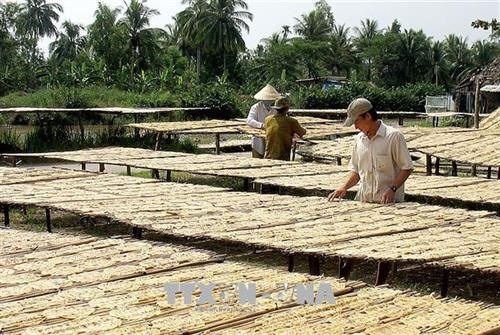Under the multi-dimensional poverty assessments which have been used since 2016, the province now has more than 17,750 poor ethnic minority households and nearly 10,500 near the poverty line.
However, the provincial People’s Committee said the rate of poor and near-poor ethnic minorities in several areas remained high.
    |
 |
|
Ca Mau province plans to reduce the proportion of poor households to 1.46 percent by 2020 |
Most of these families do not have a sustainable job, have a low academic level, and also lack capital.
Tran Hong Quan, the province’s vice chairman, said the province would continue to help them find jobs and would try to connect enterprises from other provinces and cities with ethnic-minority manufacturers.
The province will also review preferential policies, especially those aiming at dealing with financial difficulties, and available land for production.
In addition, settlement policies for ethnic minority people will be improved.
The province has allocated VND 22 billion (around USD 946,000) to build 28 roads for rural communes in difficult economic conditions in U Minh, Dam Doi and Tran Van Thoi districts.
Another VND 40 billion from the Government’s budget has been allocated to build 146 traffic, irrigation and cultural works.
The province has provided vocational training courses to 2,300 ethnic minority people, with total capital of 7 billion VND.
Since 2009, more than 2,700 ethnic minority people have found jobs thanks to the province’s introductions.
The province has 14 ethnic minority groups with a total of 44,289 people.
Ethnic Khmer have also benefited from many programs and policies on poverty reduction.
The province has provided land to nearly 500 poor Khmer households and funds for vocational training to more than 800 Khmer.
It has also helped more than 2,000 other Khmer households shift to better jobs.
In addition, as many as 5,000 Khmer households have been provided houses, while Khmer students have attended universities, colleges and vocational schools for free.
The number of poor households accounts for 5.9 percent of the total number of households in the province.
U Minh, Dam Doi and Tran Van Thoi districts have the highest number of poor households.
The province plans to reduce the proportion to 1.46 percent by 2020.
Truong Linh Phuong, head of the province’s Department of Labor, Invalids and Social Affairs, said that many programs have been held to raise awareness about assistance policies such as loans for poor households.
In the province, local farmers’ associations have provided loans, animal breeds and farming techniques to help farmers in their agricultural production and improve the economic structure of the province.
Source: VNA